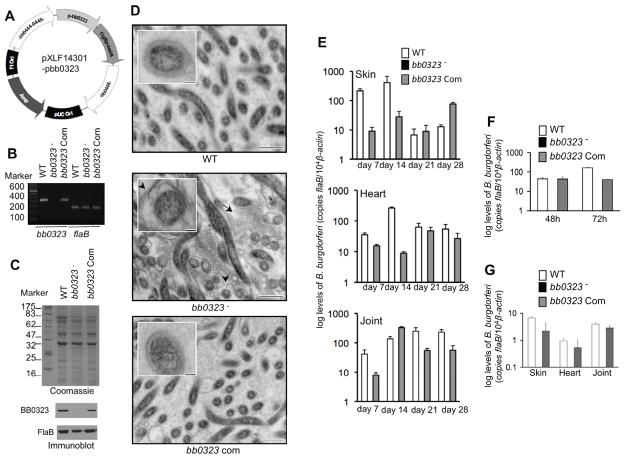Figure 3. Complementation of bb0323 mutant B. burgdorferi with bb0323 restores spirochete infectivity throughout an experimental enzootic cycle.
A, Construction of DNA construct (pXLF14301-pbb0323) for chromosomal integration of the bb0323. The open reading frame of bb0323 and its native promoter together with streptomycin resistance gene (aadA) was cloned into pXLF14301, which contains B. burgdorferi inserts for integration of the complemented gene in spirochete chromosome. B, RT-PCR analysis of the bb0323 transcripts. Total RNA was isolated from the wild type (WT), bb0323 mutant (bb0323−) or bb0323-complemented B. burgdorferi (bb0323 Com), converted to cDNA and subjected to PCR analysis. C, Reproduction of BB0323 protein by the complemented B. burgdorferi. Lysates of B. burgdorferi were separated on a SDS-PAGE gel, which was either stained with Coomassie blue (upper panel) or immunoblotted with specific antibodies (lower panels). D, Complementation of bb0323 mutant with bb0323 gene restores ultrastructural defects of mutant cells. B. burgdorferi were grown at a density of 5×107/ml in BSK medium and processed for transmission electron microscopy. Arrows indicate enhanced shedding of vesicular structures or blebs, possibly derived from the outer membrane, in the mutants. Inset shows higher magnification images of a representative single cell indicating altered organization of outer membrane in the bb0323 mutant. Bar = 500 nm (inset Bar = 100 nm). E, Complementation restores spirochete infectivity in mice. Spirochete burden in groups of infected mice (5 animals/group) was analyzed by quantitative RT-PCR at days 7, 14, 21 or 28 by measuring copies of the flaB gene and normalized against mouse β-actin levels. Bars represent the mean ± SEM of relative tissue levels of pathogen from three independent animal infection experiments. F, bb0323-complemented B. burgdorferi are acquired by ticks. Mice were inoculated with spirochetes (5 mice/group) and following two weeks of infection, naïve I. scapularis nymphs (25 ticks/mice) were allowed to feed on mice. Spirochete burdens were assessed in ticks by qRT-PCR, by measuring copies of the B. burgdorferi flaB gene and normalized against tick β-actin levels. Bars represent the mean ± SEM from three independent experiments. G, bb0323-complemented B. burgdorferi persisted through larval-nymphal molt and transmit from feeding ticks to mice. B. burgdorferi-infected nymphs were generated by feeding larva on infected mice, which were allowed to feed to repletion on naïve mice (3 tick/mouse, 5 animal/group). Murine tissues were isolated at day 14 after repletion and the spirochete burdens were assessed by qRT-PCR. Bars represent the mean ± SEM from two independent experiments.

